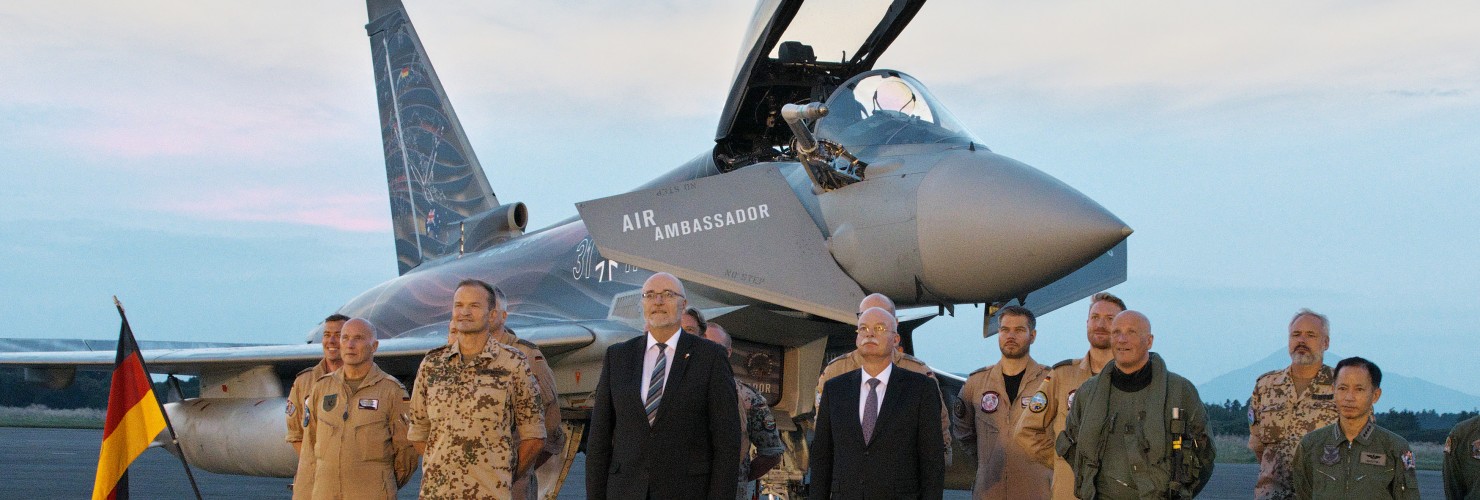

Germany’s shaky turn to the Indo-Pacific
While Berlin has become more engaged in the region, it still has no clear strategy on how to approach it. Old principles guiding the Germany-China relationship are getting in the way.
It is two years since the German government released its first-ever Indo-Pacific guidelines, and the situation in the region and the world is now drastically more tense. Russia’s invasion of Ukraine still rages on, the United States and China increasingly compete for influence, and Beijing’s response to House Speaker Nancy Pelosi’s visit to Taiwan this summer has only increased the risk of escalation in the region. Despite these dynamics, which could have easily overshadowed other issues, the German government has successfully stepped up its presence in the Indo-Pacific, taking some steps to implement the guidelines.
In a clear expression of the government’s interest in the Indo-Pacific, the region has seen a concentration of high-level visits by German political leaders. Since Chancellor Olaf Scholz visited Japan in April for his first trip to the region, President Frank-Walter Steinmeier and Foreign Minister Annalena Baerbock have traveled to Singapore, Indonesia, Palau, and Japan. And further trips to the region by Scholz, Steinmeier, and Economy Minister Robert Habeck are expected later this year.
But it is in the security and defense space where Berlin seems to have turned a corner. Policymakers in the German capital seem to have realized that they can no longer afford to ignore the tensions in the region. The endless debates over the German frigate Bayern’s mission to the Indo-Pacific have thus given way to the deployment of aircraft to Australia to participate in the Pitch Black and Kakadu joint exercises, and to announcements by General Eberhard Zorn, the Bundeswehr’s chief of staff, that Germany will further expand its military presence in the region. The plan, according to him, is to send more warships in 2024 and to continue joining drills with allies already from next year.
The missing China connection
While all of the above seems like a cause for celebration, Germany’s approach to the Indo-Pacific and its motivation to become more involved, especially in security matters, are still on shaky ground. Even though one is now under development, Germany continues to lack a consistent China strategy, and it has not yet defined how it plans to reconcile its Indo-Pacific ambitions with its longstanding reluctance to anger the Chinese government.
Beijing is, after all, one of the main sources of the regional tensions that Berlin often refers to as justification for the need to increase its engagement. It is China that is challenging the rules of the international order in the South China Sea, that is heightening the risk of escalation in the Taiwan Strait, and that is accelerating a process of rearmament across its neighborhood. Nonetheless, China is barely mentioned in the German government’s Indo-Pacific plans or pronouncements, including the Indo-Pacific guidelines and the progress report that was published in mid-September.
In a similar vein, Chief of Staff Zorn on the one hand said that he was keeping an eye on the “enormous buildup of Chinese forces” and that the German presence was meant to send a “strong signal of solidarity with our allies” (solidarity against whom, one may ask). But on the other hand, he insisted that Germany does not want to provoke anyone with its presence and refused to take a stance on whether German navy ships will sail through the South China Sea or the Taiwan Strait.
The Indo-Pacific is larger than China, and Germany is right in trying to develop a broader approach to the region that is distinct from its China strategy. India, Japan, Australia, and many others have rightly been identified as key partners. But the reality is that no Indo-Pacific strategy is complete without a clear stance and parameters on how to engage with an increasingly assertive and ambitious China.
Without this, Germany’s presence in the region is likely to remain low-intensity, inconsistent, and as uncontroversial as possible, as well as prone to disengagement if tensions increase. If Berlin’s objective is to defend the rules-based order in the region as a way to defend German (and European) interests and security, this is not the way to go. Indo-Pacific allies and partners from Australia to Taiwan have called on Germany to do more, but the fear of provoking China is still holding Berlin back. Germany must stop letting Beijing dictate when and how it can operate in the region.
Dangers of a Europe-focused Zeitenwende
Russia’s invasion of Ukraine is forcing Germany to reinvent itself as a security actor. The Zeitenwende announced by Chancellor Olaf Scholz, however, is for now all about Europe. Having an operational Bundeswehr and a stronger role for Germany as a security actor on the continent are important and necessary goals. But Berlin should not lose sight of security challenges further afield.
The People’s Liberation Army’s response to Pelosi’s visit to Taiwan set a new benchmark for China’s military pressure on Taiwan, which is likely to remain high after the 20th Party Congress this October. As the status quo becomes increasingly unstable, US-China competition worsens, and prospects for peaceful reunification remain dim, Beijing is likely to see intimidation as the only available option. The risk of escalation in the Indo-Pacific—whether accidental or intentional—is becoming all too real. This is a situation that Germany must be prepared to respond to, as the impact of a war in Taiwan on its interests and security would be considerable.
There is another danger to Germany’s exclusive focus on the European theater and the expectation of a division of labor with a United States that is increasingly pivoting toward the Indo-Pacific. This is an arrangement that can work while there is a president in the White House that is invested in cooperating and coordinating with allies. But things can very quickly fall apart with a more unilateral or isolationist US administration. With US presidential elections coming up in 2024, policymakers in Berlin and across Europe would do well to remember the state of the transatlantic relationship under President Donald Trump whenever they are tempted to leave the Indo-Pacific to Washington and focus most of their energies on Europe.
The German military’s limited presence in the Indo-Pacific today is understandable given the Bundeswehr’s limited capabilities. But the German government should already start thinking about the longer-term requirements for its armed forces and should aim at establishing the parameters for a stronger and more sustainable German security engagement in the Indo-Pacific. Whether through more regular military deployments, by increasing deterrence through political and economic means, or by helping regional partners with capacity and resilience building, there is much more that Germany could be doing.
The German approach to the Indo-Pacific still lacks ambition and long-term vision, and is still being held back by longstanding dogmas governing Germany-China relations. The upcoming National Security and China Strategies, however, provide a perfect opportunity to fix this. It is time for Germany to leave behind old guiding principles and develop a security policy and Indo-Pacific strategy suited to today’s realities.
This article was first published by Internationale Politik Quarterly on September 29, 2022.

